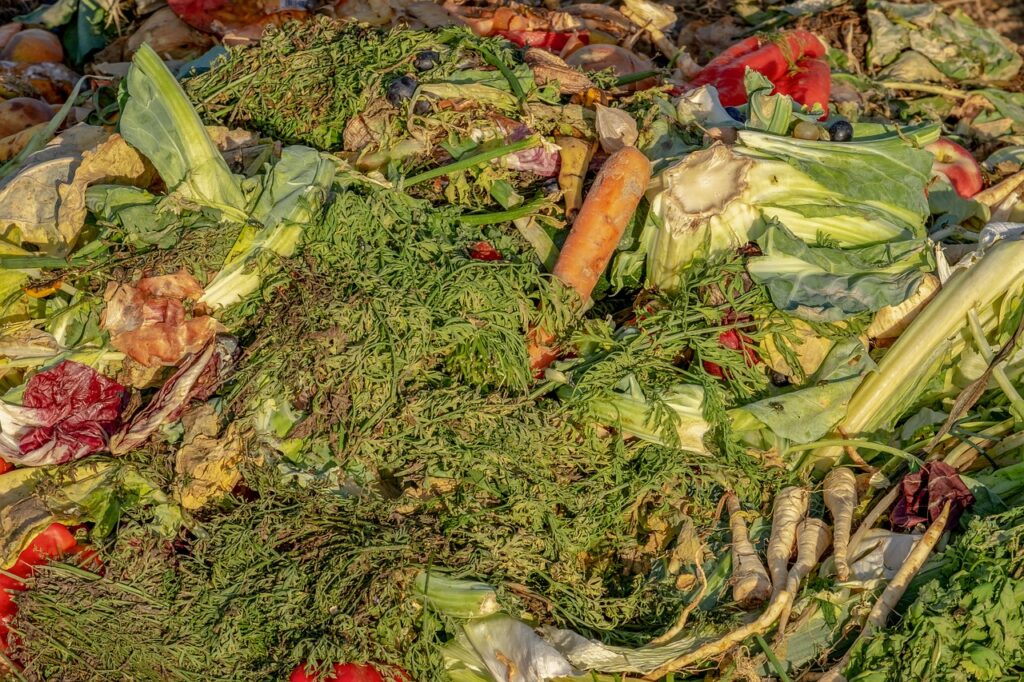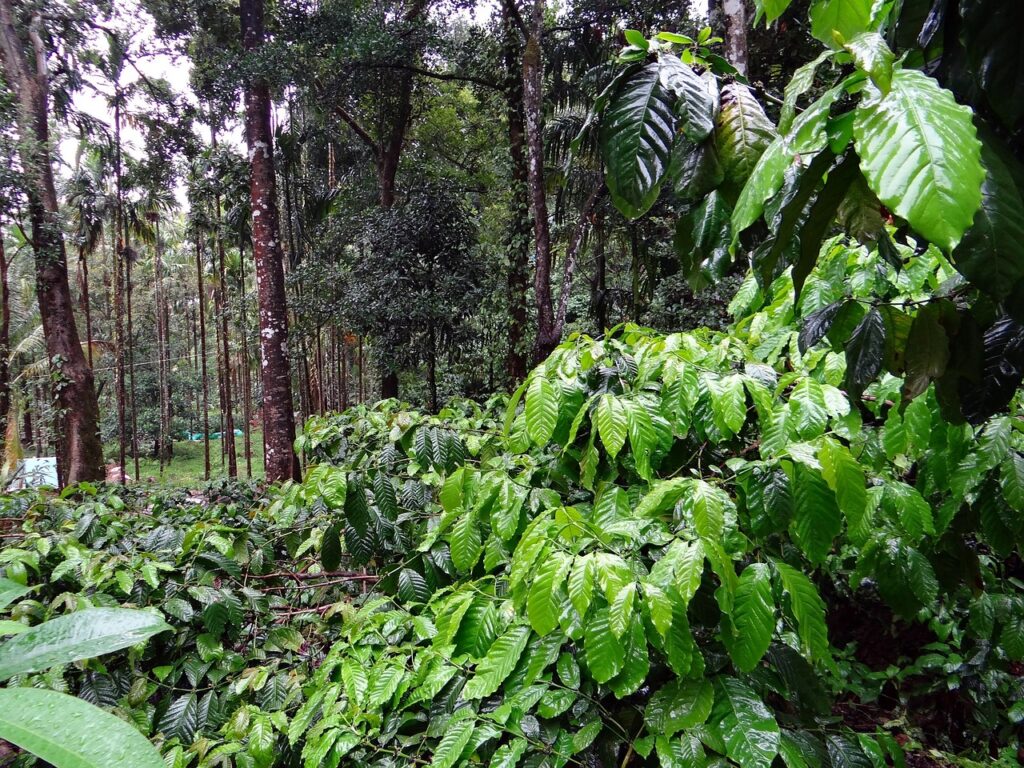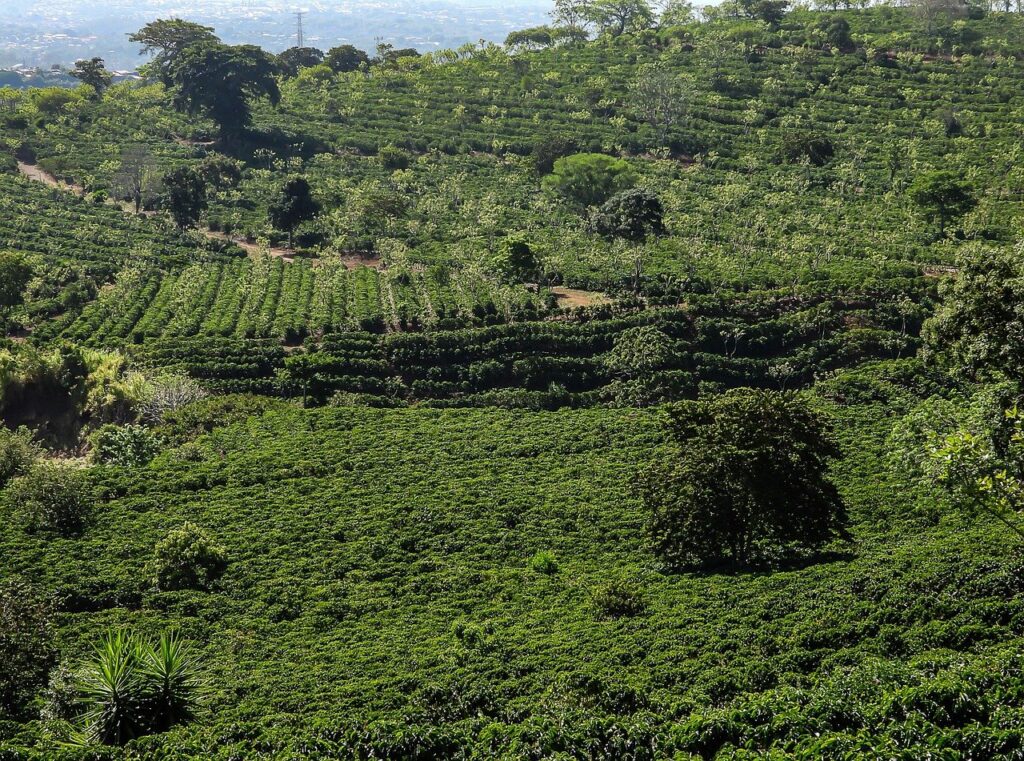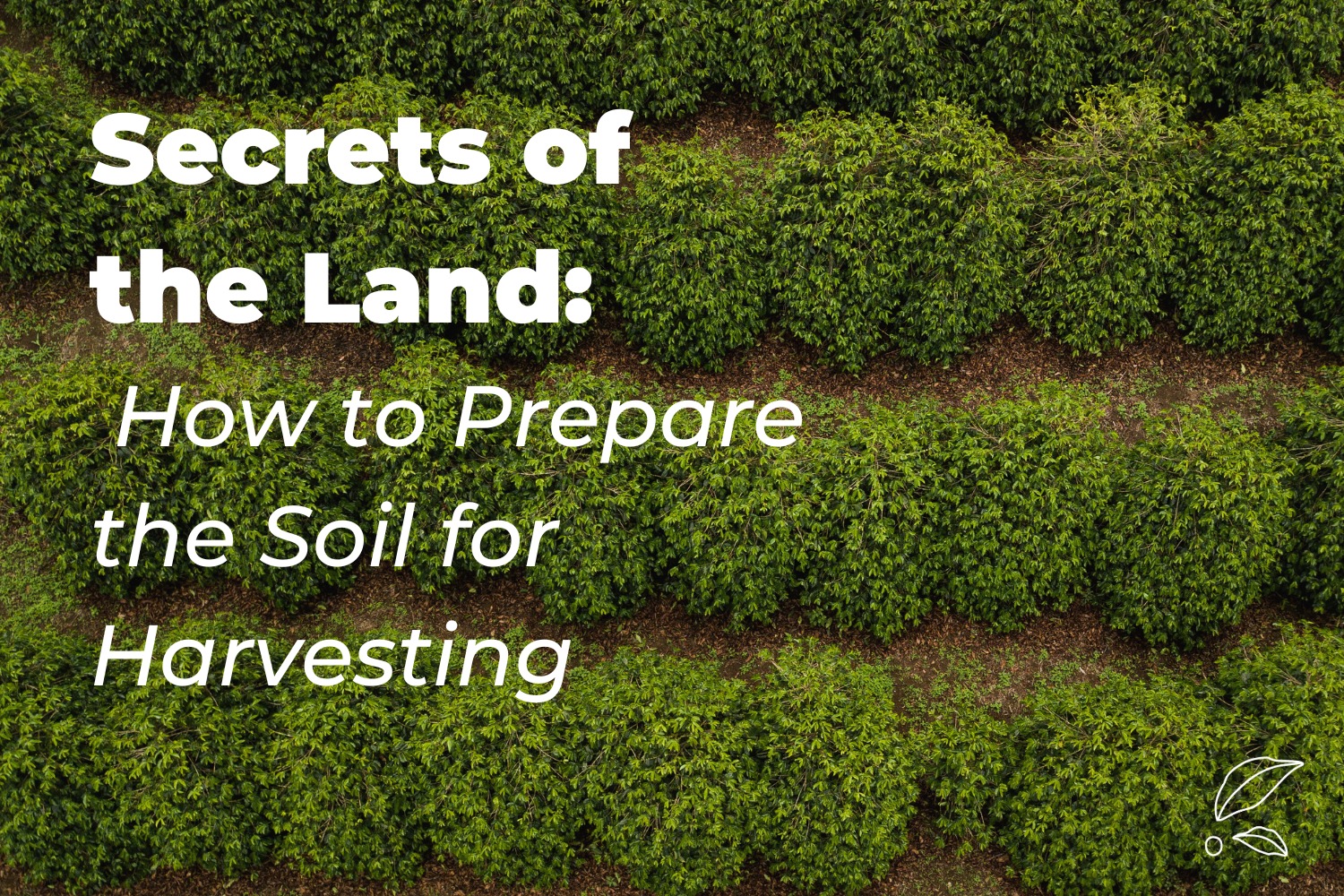Welcome to our blog dedicated to specialty coffee producers! Here, we will dive deep into the heart of the coffee growing and explore one of the most crucial foundations for success in producing excellent beans: proper soil preparation.
To achieve the aroma, taste, and quality that delight lovers of good coffee, it is essential to start at the root. Careful preparation and proper nutrition of the soil are the foundation that supports the entire journey, from planting to the cup.
So, get ready to embark on this journey of discovery and improvement with FARMly, because preparation is just the beginning. Let’s nurture our knowledge, cultivate success and enjoy each achievement as we transform coffee beans into an incomparable experience for specialty coffee lovers. Let’s get started!
Know The Main Factors For Excellent Soil Preparation
1 – Soil Analysis
Soil preparation is the foundation that supports the quality and exceptional flavor of specialty coffee. Imagine the analysis as a “photograph” of the land, capturing all the details that will shape the future of the coffee plantation. This process involves collecting representative soil samples from different areas of the farm, either manually with a shovel or auger, or with the aid of specialized equipment.
These samples are carefully sent to specialized analysis laboratories, where they undergo a series of thorough tests. The results reveal vital information such as the number of essential nutrients, including nitrogen, phosphorus, potassium, calcium, magnesium, and other crucial elements. In addition, the analysis assesses the soil’s pH and its cation exchange capacity, among other important parameters.
The information obtained through the analysis provides producers with accurate data on the fertility and unique characteristics of the soil on their property. This in-depth understanding is critical for making smart decisions about proper soil management and for the correct application of fertilizers, avoiding under- or overdosing of nutrients that could negatively affect coffee quality and production.
Soil analysis should be a regular and periodic process, especially for producers who carry out successive crops in the same area. In this case, soil analysis should be carried out more frequently, usually every 1 to 2 years. Soil is a dynamic resource that can change over time, influenced by factors such as cultivation, climatic conditions, and other variables.
Based on the results of the analysis, farmers are able to make informed and accurate decisions. Corrections can be made to address nutrient deficiencies or adjust soil pH by adding appropriate fertilizers or correctives such as lime or sulfur.
In summary, soil analysis is an essential and strategic step for specialty coffee producers. It provides valuable information that guides preparation, creating the ideal conditions for healthy coffee plant growth. By utilizing this data, producers have greater control over soil fertility, contributing to high-quality coffees and long-term sustainability on their farms. The analysis is the first step towards truly exceptional specialty coffee.
2 – Nutrient correction
Nutrient correction is a fundamental step after soil analysis. Based on the results obtained, specialty coffee producers can take precise measures to correct nutrient deficiencies or imbalances in the soil. Proper correction ensures that coffee plants receive the nutrients they need for healthy development and the production of high-quality beans.
After receiving the results of the analysis, producers can identify which nutrients are lacking or in excess, as well as the amount needed for optimal coffee cultivation. It is essential to highlight that the application of fertilizers must be based on the real need of the plants, avoiding waste and negative impacts on the environment.
- Choosing the Right Fertilizers:
There are several types of fertilizers available in the market, and each has a specific composition of nutrients. Based on the soil analysis, farmers can choose fertilizers that meet the specific needs of their crops. Some common options include nitrogen, phosphate, potash, calcium, and magnesium fertilizers.
- Liming:
Liming is a soil correction practice that aims to adjust the pH. If the soil analysis shows a pH below the ideal for growing coffee (usually between 6 and 6.5), it may be necessary to add lime to raise the pH and make it more neutral. Lime also helps to make the nutrients present more available to the plants.
- Balanced Fertilization:
Balanced fertilization is crucial to provide coffee trees with all the required nutrients in adequate amounts. The use of fertilizers with a balanced composition avoids nutrient deficiencies or excesses, resulting in healthy plant growth and, consequently, high-quality coffees.
- Organic vs. Chemical Fertilizers:
Producers can also opt for organic or chemical fertilizers, depending on their preferences and pursuit of sustainable practices. Organic fertilizers, such as manure composts or plant residues, contribute to the improvement of soil structure and the maintenance of microbial biodiversity. On the other hand, chemical fertilizers are more concentrated and quickly absorbed by plants, providing a rapid response to nutritional needs.
- Regular Monitoring:
Regular monitoring of plants is essential to assess the effectiveness of nutrient correction. Through visual observations, such as leaf coloration and growth, growers can identify signs of nutrient deficiencies or excesses and take corrective action as needed.
In summary, nutrient correction is an essential and responsible step in preparing the soil for growing specialty coffee. By choosing the right fertilizers and applying them in a balanced way, producers ensure that their plantations receive all the nutrients needed to produce high-quality coffee beans with exceptional taste. By adopting conscious and sustainable practices, specialty coffee producers contribute to responsible production and environmental preservation, thus promoting excellence in every cup of coffee.
3 – Organic Matter
Organic matter plays a vital role in preparing the soil for growing specialty coffee. It is the key to increasing fertility, improving soil structure, and promoting coffee plant health in a natural and sustainable way. In this section, we will explore the importance of organic matter, how to incorporate it, and the benefits it brings to quality coffee production.
- What is organic matter?
Organic matter is composed of substances of plant or animal origin in different stages of decomposition. It can include plant remains, manure, previous crop residues, pruning remains, and other organic substances. These materials are rich in essential nutrients such as nitrogen, phosphorus, potassium, and micronutrients, and also help to improve soil structure by promoting water retention and aeration.

- Composting: Turning Waste into Gold
Composting is a valuable practice for turning organic waste into “gold” for the soil. By composting prunings, coffee peels, fallen leaves, and other organic materials, producers create a nutrient-rich compost that can be incorporated into the soil. In addition, composting helps reduce waste and contributes to the sustainability of the agricultural system.
- Adding Organic Matter: The Food of the Soil
Incorporating organic matter into the soil nourishes the underground ecosystem by providing food for the vast and diverse community of beneficial microorganisms. These microorganisms, such as bacteria, fungi, and earthworms, play a key role in decomposing organic matter, cycling nutrients, and improving structure. By feeding it, organic matter helps to maintain a favorable environment for the healthy growth of coffee plant roots.
- Improving Soil Structure and Water Retention
Organic matter contributes to improving soil structure, especially in sandy or clay soils. In sandy soils, organic matter helps to increase water retention capacity, preventing rapid drainage and ensuring that coffee plants have constant access to water and nutrients. In clay soils, organic matter helps increase aeration and water runoff, preventing excess moisture from accumulating.
- Soil Sustainability and Regeneration
Adding organic matter to the soil is a key practice for agricultural sustainability and regeneration. Rather than relying exclusively on chemical fertilizers, incorporating organic matter promotes long-term soil health by making it more resistant to diseases and pests. In addition, organic matter contributes to erosion reduction and carbon sequestration, playing a positive role in the fight against climate change.
In summary, organic matter is a key element in soil preparation for specialty coffee cultivation. Its addition nurtures the soil, improves its structure, increases water retention, and promotes the health of coffee plants in a sustainable way. The practice of composting and the conscious use of organic waste are important steps to ensure that the soil is a fertile and favorable environment for healthy plant growth, resulting in coffee beans of high quality and exceptional taste. The quest for excellence in specialty coffee begins with caring for the land and incorporating its valuable organic matter.
4 – Soil Structure
Improving soil structure is a key aspect of preparing the land for growing specialty coffee. A healthy structure provides the ideal environment for the development of coffee plant roots, allowing for better absorption of nutrients and water. In this section, we will explore the practices that contribute to improving structure and the benefits it brings to quality coffee production.
- Adequate Aeration and Drainage:
Structure directly influences aeration and drainage. Compacted or poorly structured soils can present problems such as poor air circulation and difficulty in water runoff, which can lead to suffocation of roots and waterlogging of the soil. To improve aeration and drainage, practices such as incorporating organic matter, adopting contour planting systems, and using sustainable management techniques are essential.
- Erosion prevention:
Soils with inadequate structure are more susceptible to erosion, especially in sloping areas or those subject to heavy rainfall. Erosion can lead to the loss of fertile soil and essential nutrients, damaging the health of coffee plants. To prevent erosion, conservation techniques such as strip-till or contour planting, the use of mulch, and the adoption of agroforestry practices can be implemented to protect the soil and its properties.
- Benefits of Organic Matter:
As mentioned in the previous section, the addition of organic matter is one of the main ways to improve soil structure. Organic matter acts as an aggregating agent, promoting the formation of aggregates and improving soil porosity. This results in a fluffier, well-structured soil, allowing plant roots to develop freely, as well as facilitating root penetration in search of water and nutrients.
- Conservation of Microbial Biodiversity:
Improvement in soil structure is also associated with the conservation of microbial biodiversity. Soil microorganisms play a key role in the decomposition of organic matter, nutrient cycling, and protection against pathogens. An adequate structure provides a favorable habitat for these beneficial microorganisms, creating a beneficial symbiosis with coffee plants and increasing the system’s resistance to pest and disease attacks.
- Crop Rotation and Agroforestry Systems:
Crop rotation and the integration of agroforestry systems also contribute to the improvement of soil structure. Crop rotation helps to avoid the depletion of specific nutrients, while agroforestry systems, with the combination of trees and coffee crops, improve soil biodiversity and promote the development of deeper and more resistant roots.

In summary, improving soil structure is an essential factor to ensure success in specialty coffee production. Through proper aeration and drainage, erosion prevention, incorporation of organic matter, and conservation of microbial biodiversity, producers can create an environment conducive to healthy coffee plant growth. By adopting sustainable practices such as crop rotation and agroforestry systems, producers also contribute to soil and biodiversity preservation, ensuring quality coffee production and long-term sustainability. Improving the structure is a valuable investment for the health of the land and the quality of the coffee beans produced.
5 – Soil Conservation
Soil conservation practices are key to maintaining the health and fertility of the land over time. They aim to reduce erosion, improve structure, preserve biodiversity, and protect natural resources. For specialty coffee producers, adopting soil conservation practices is essential to ensure sustainable and high-quality production. In this section, we will explore some effective conservation practices applicable to specialty coffee production.
- Planting on contour lines:
Contour planting is a soil conservation practice that consists of following the natural contour lines of the land while planting crops. This technique helps to reduce the speed of water during rainfall, reducing the risk of erosion. By implementing contour planting, farmers create small terraces on the level, preventing water from running off in large volumes and carrying the fertile soil away. This allows water to be absorbed into it, recharging the water table and nourishing the coffee plants.

- Mulching:
Mulching is a practice that involves growing cover crops or maintaining natural vegetation between the coffee trees’ rows. This cover protects the soil from erosion caused by the direct impact of rainfall, maintaining soil moisture and fertility. In addition, the decomposition of cover crops contributes to the improvement of organic matter in the soil, enriching it with essential nutrients.
- Buffer strips:
The creation of buffer strips along watercourses, springs, and hillside areas is an important practice to prevent water contamination and erosion. These strips are covered with native vegetation or groundcover plants that act as natural barriers, filtering out potential sediments or chemicals that could reach water bodies. Protecting these areas helps preserve water quality and local biodiversity.
- Conservation of Riparian Forest Areas:
Riparian forests are strips of native vegetation along the banks of rivers, streams, and springs. They play a vital role in soil conservation, acting as natural barriers against erosion caused by water action. In addition, riparian forests provide habitat for various species of flora and fauna, contributing to biodiversity and ecological balance.
- Sustainable Pest and Disease Control:
The use of integrated pest and disease management practices is also part of soil conservation practices. Avoiding the indiscriminate use of pesticides and adopting preventive measures, such as crop rotation and the use of resistant varieties, preserves soil health and biodiversity, as well as minimizing negative impacts on beneficial fauna and soil microorganisms.
In summary, soil conservation practices are key to the sustainability of specialty coffee production. By implementing contour planting, promoting vegetation cover, protecting water areas, and preserving riparian forests, coffee producers contribute to soil health, water quality, biodiversity, and the resilience of the ecosystem as a whole. Soil care is essential to ensure that future specialty coffee harvests are prosperous and that the environment is preserved for generations to come. Soil conservation practices are a wise and responsible choice, reflecting the producers’ commitment to excellence in specialty coffee production and the protection of the environment.





